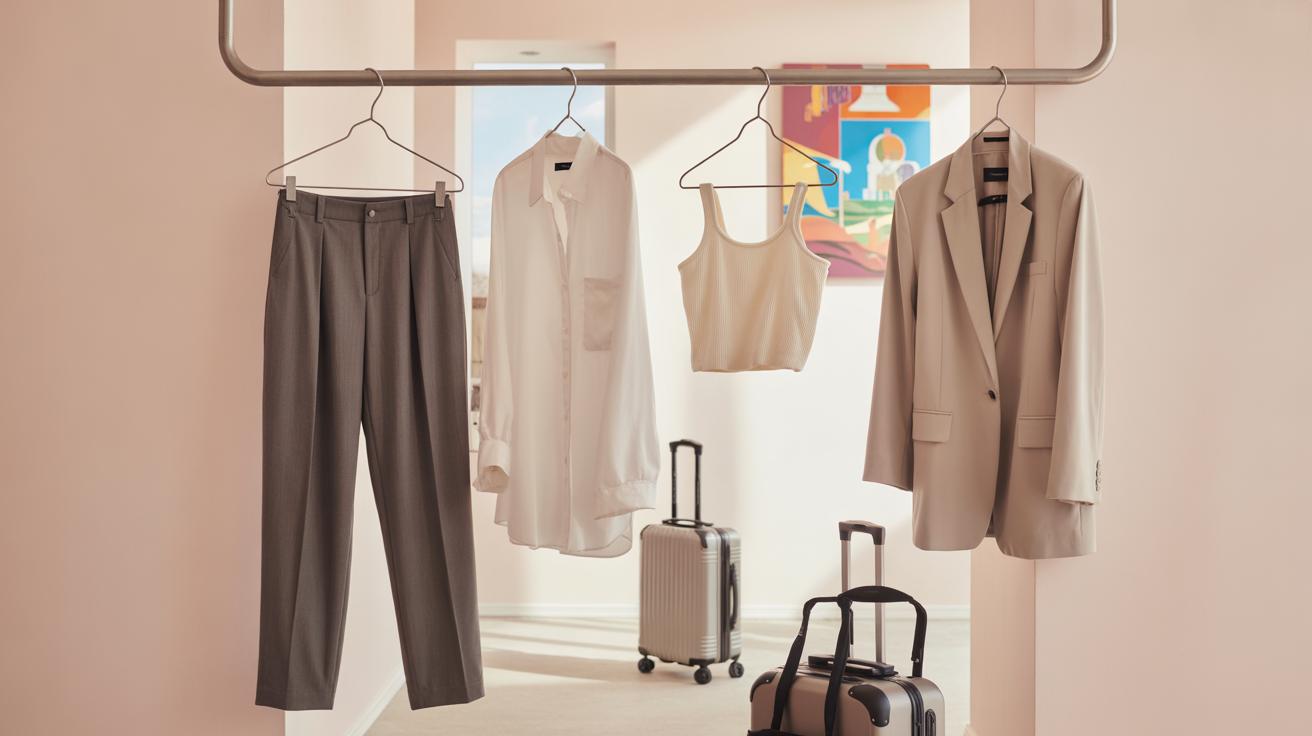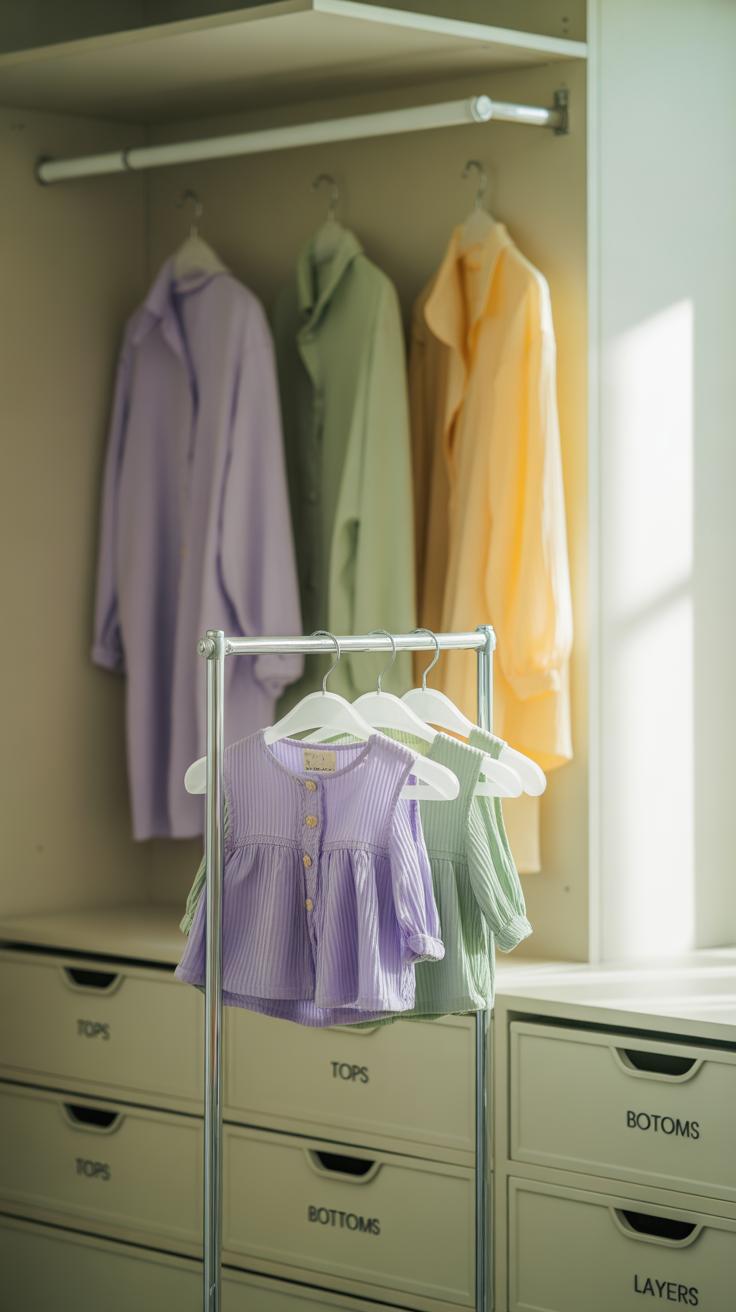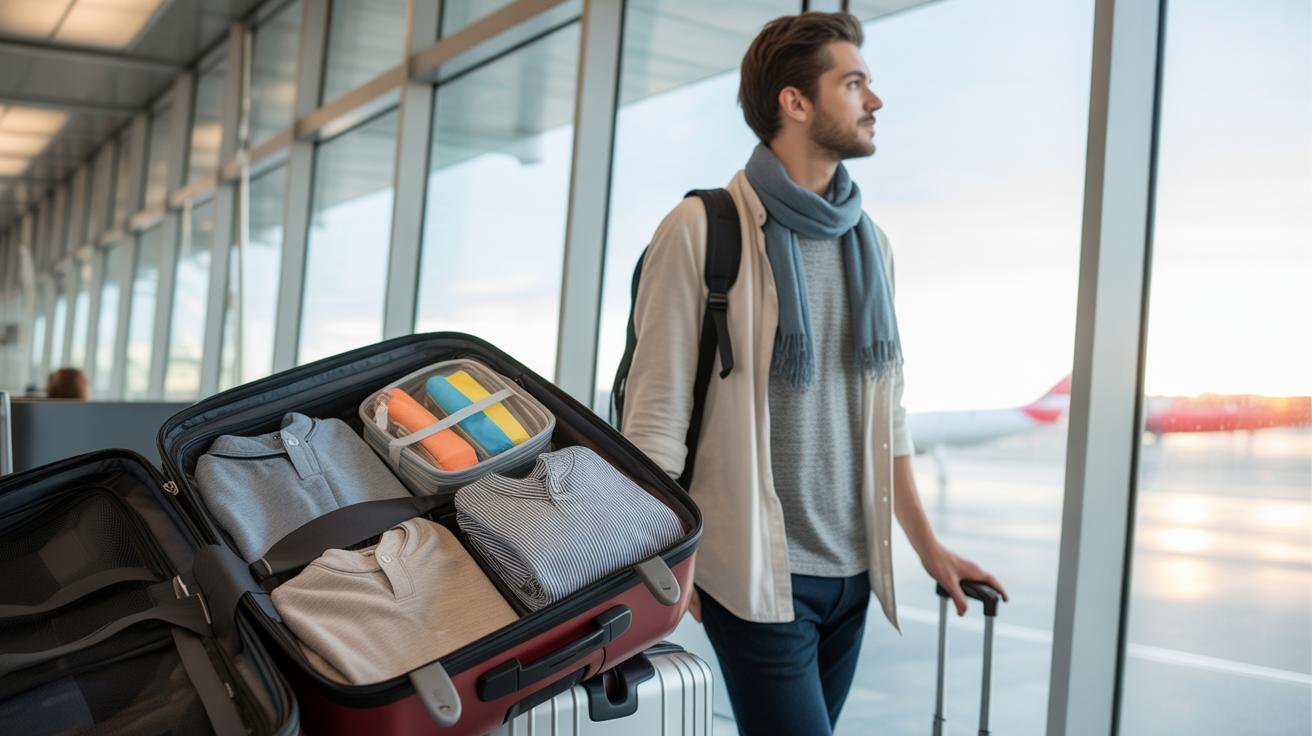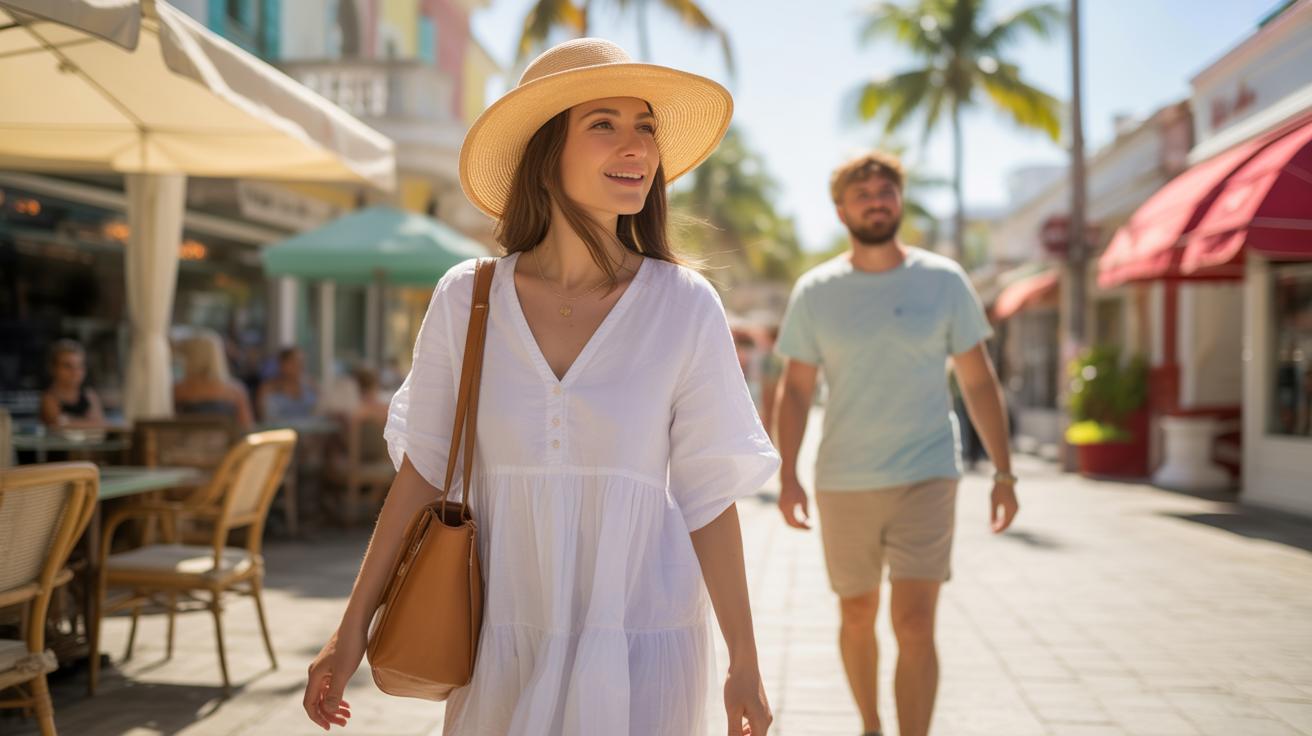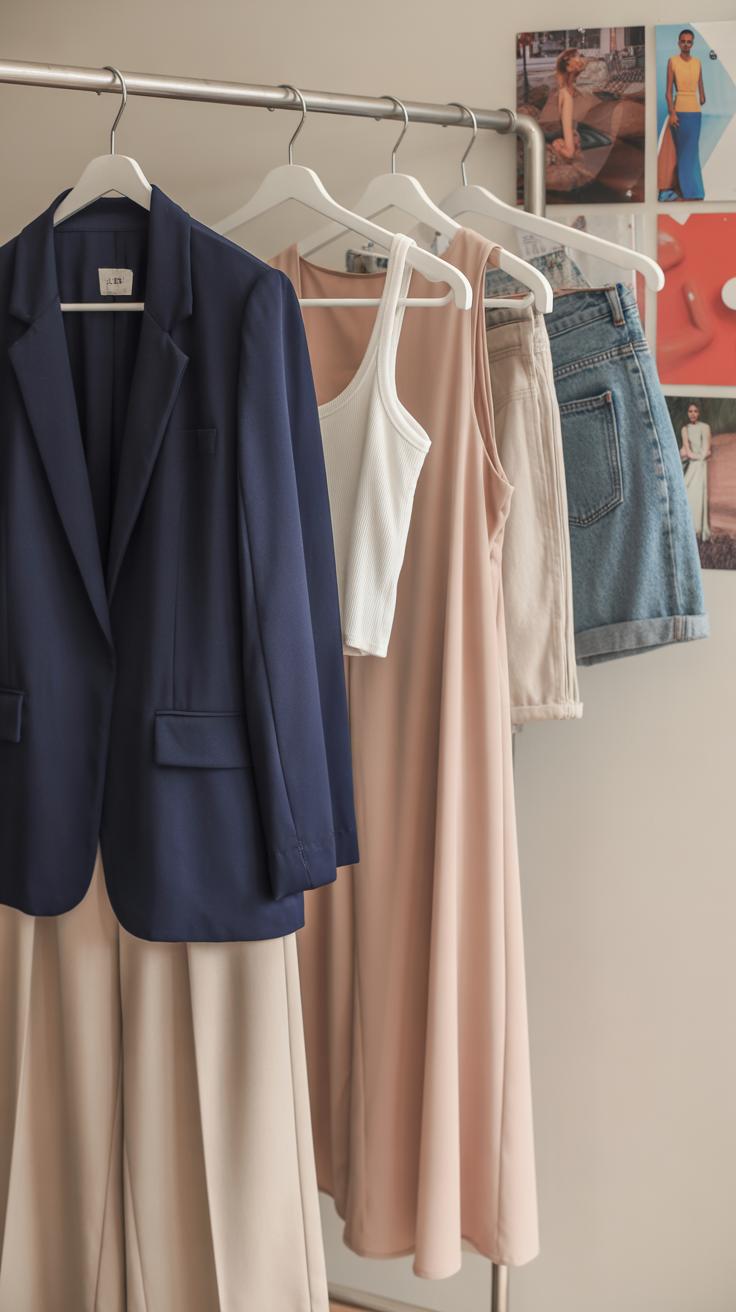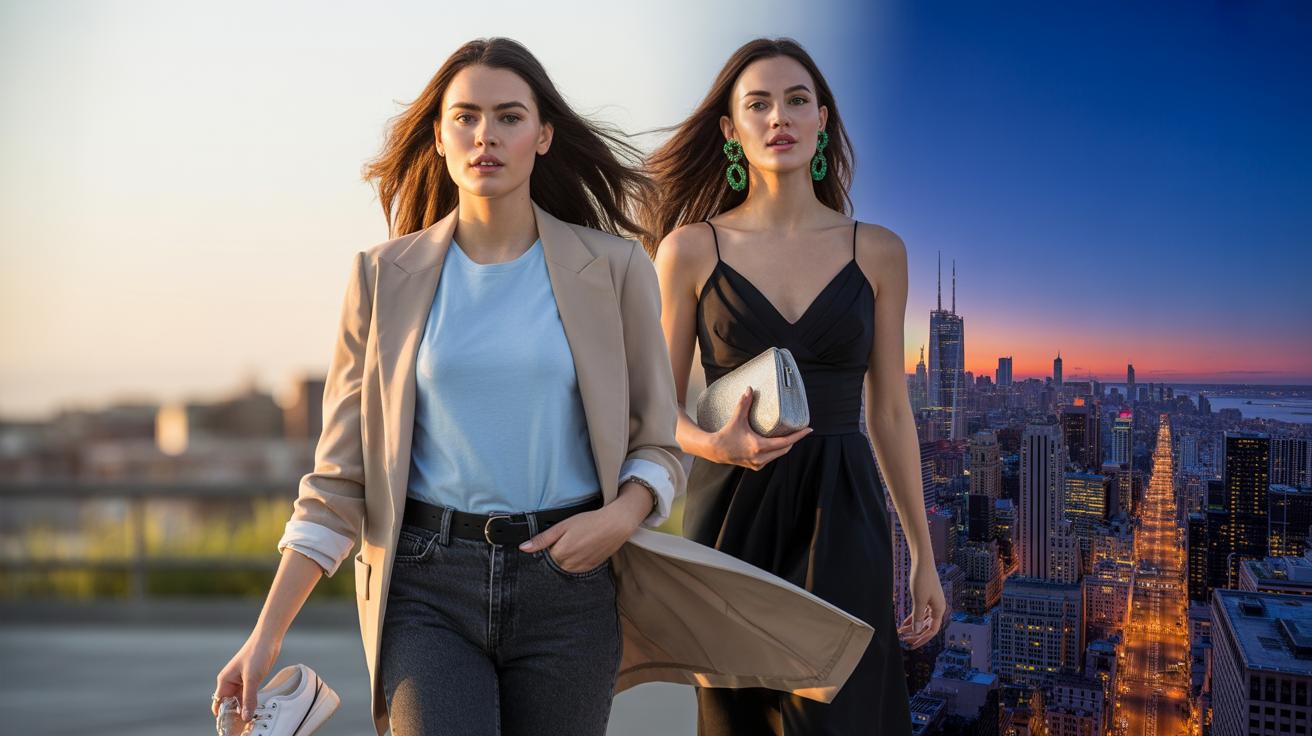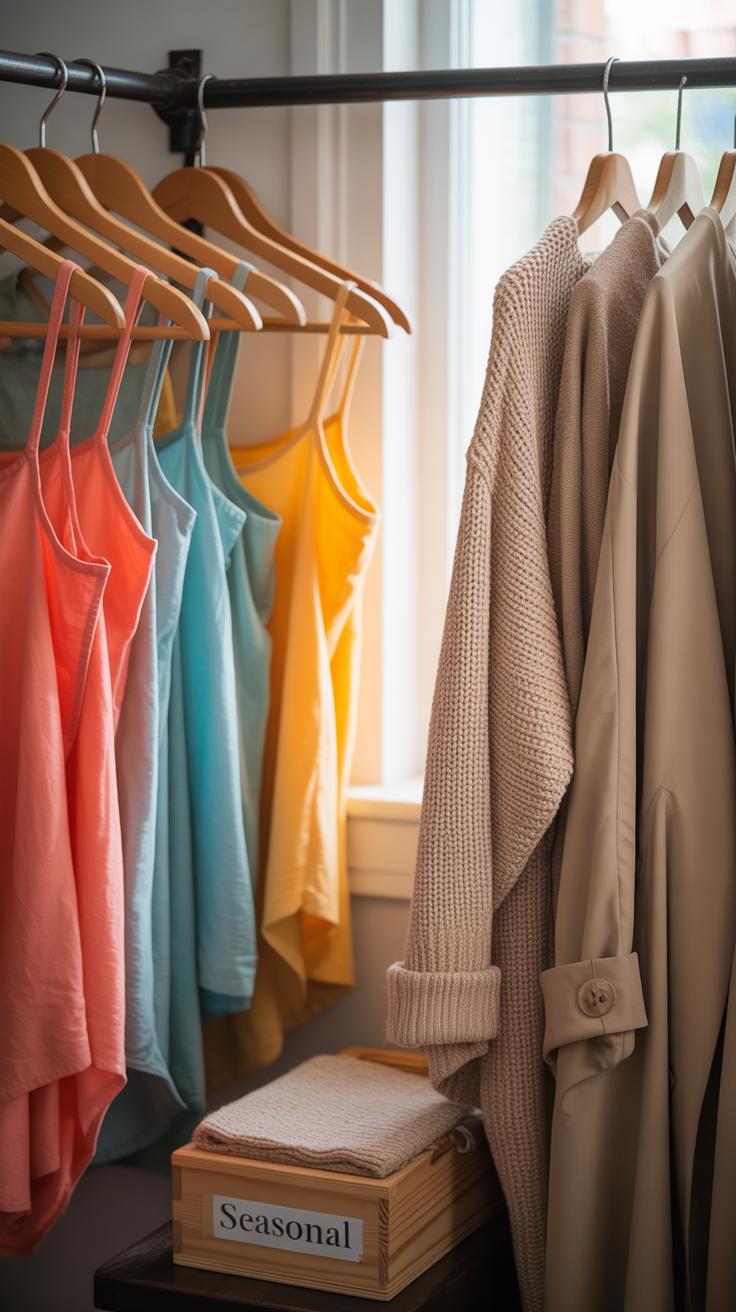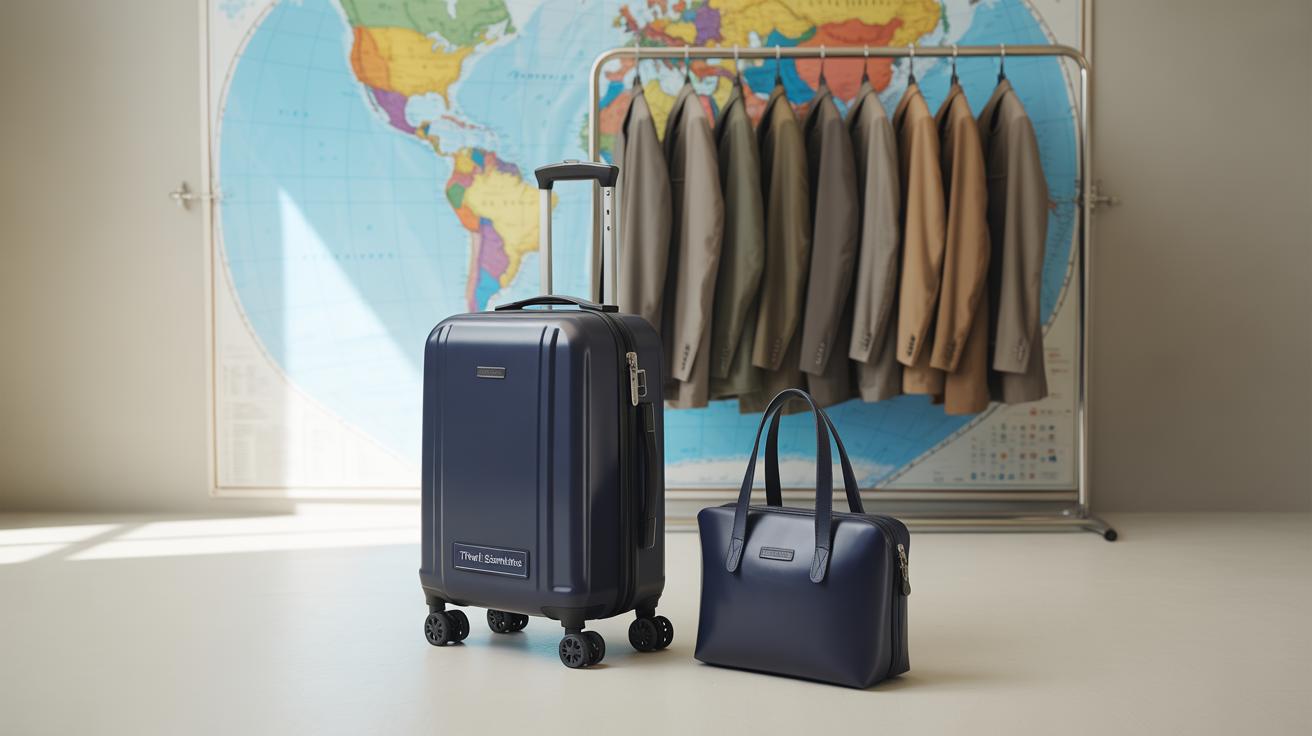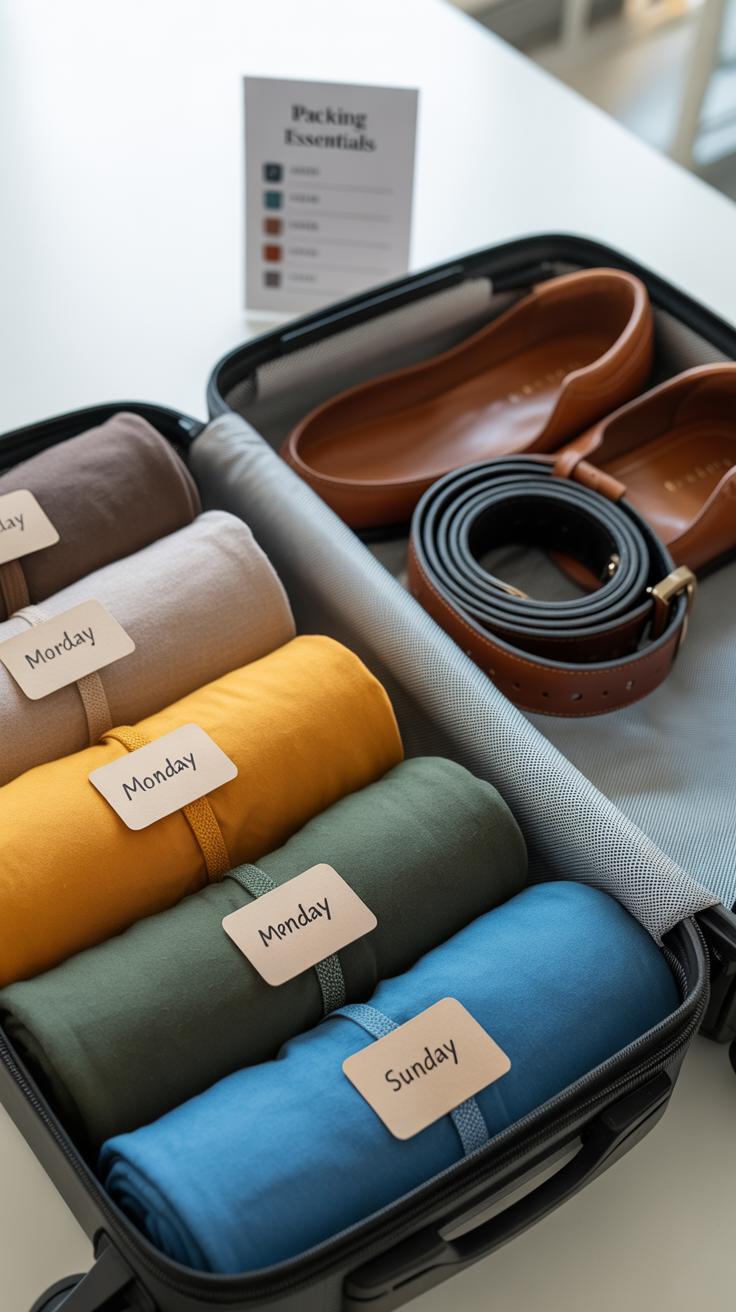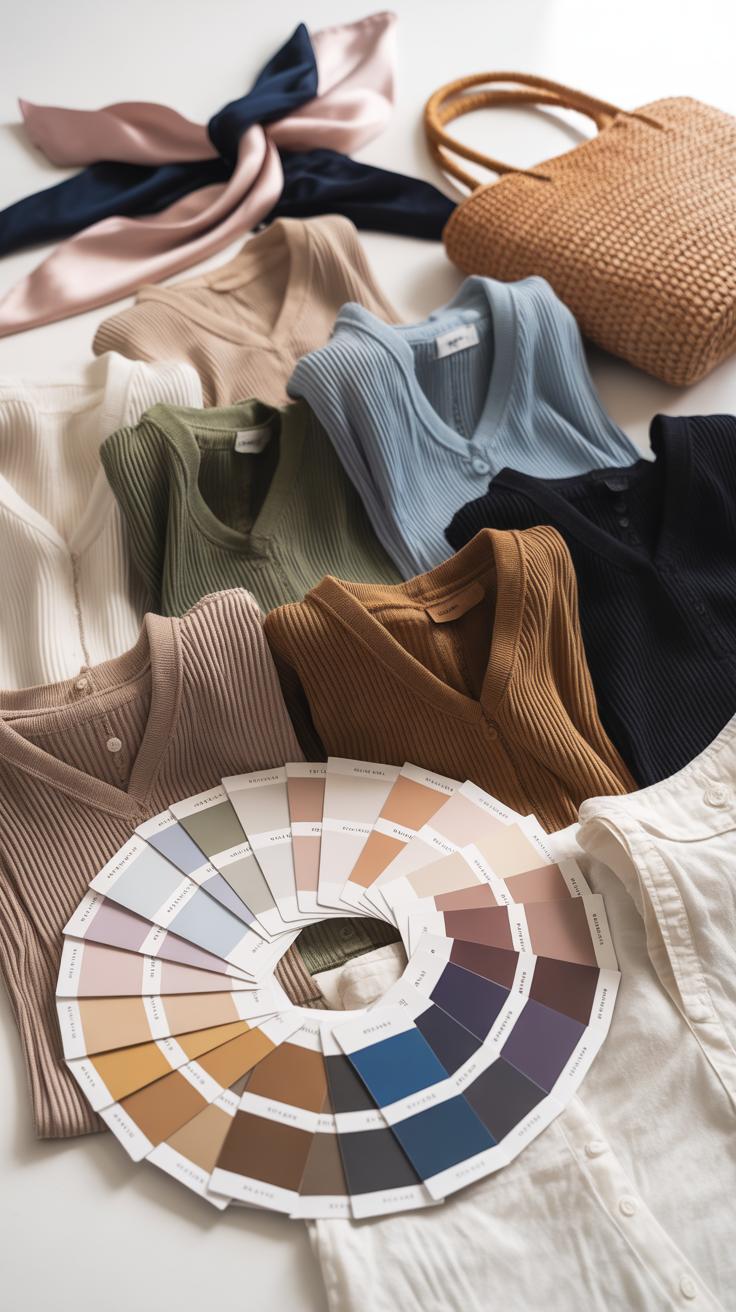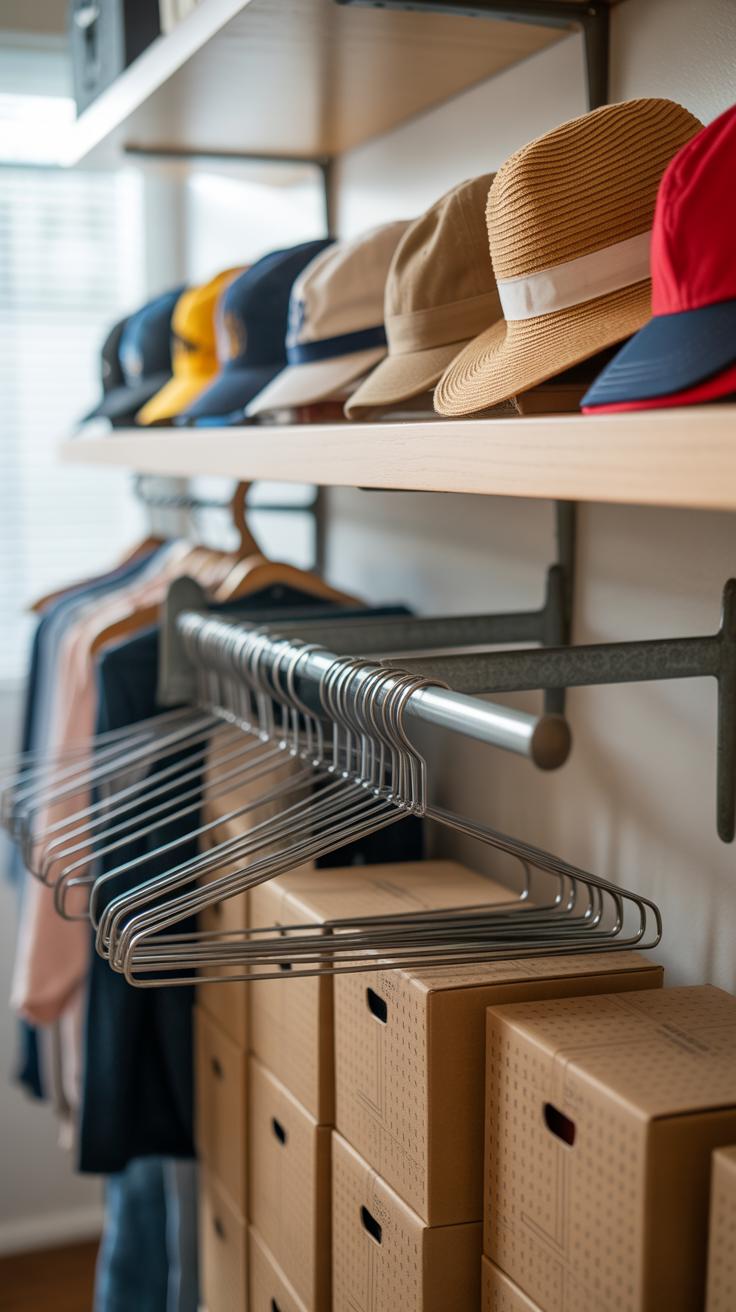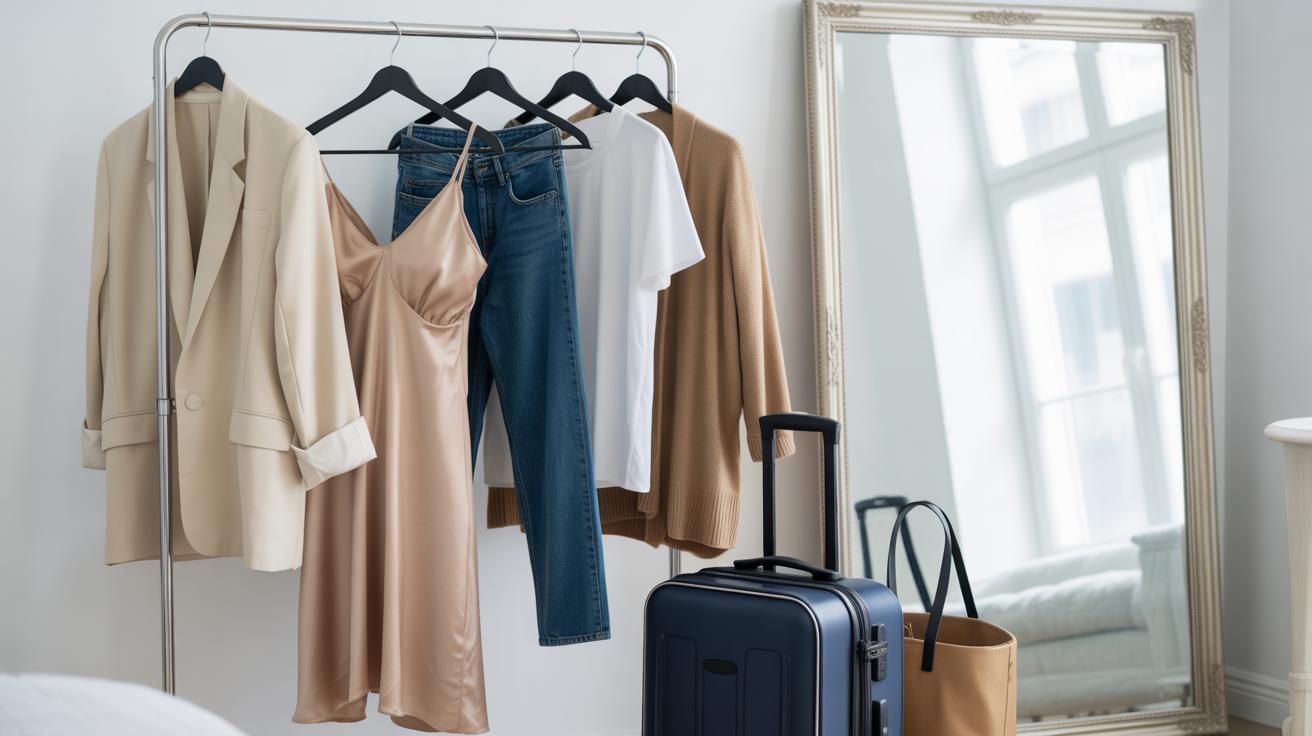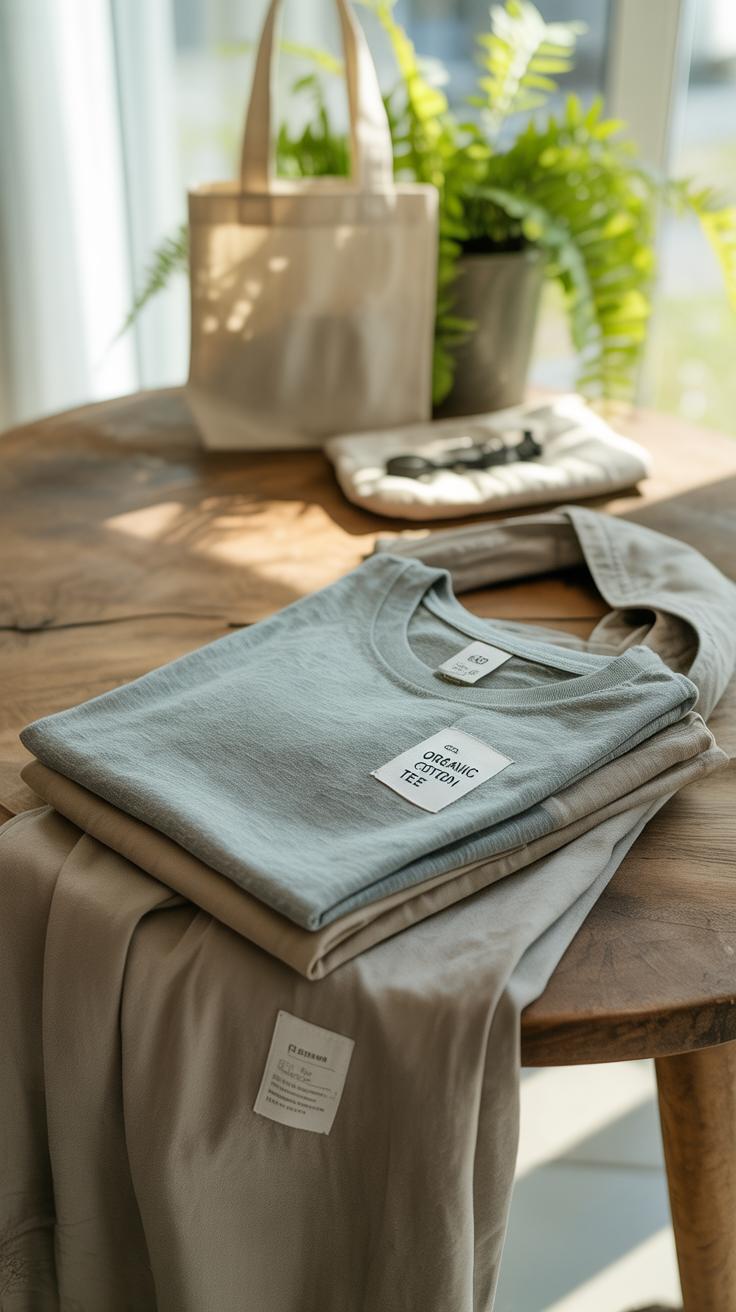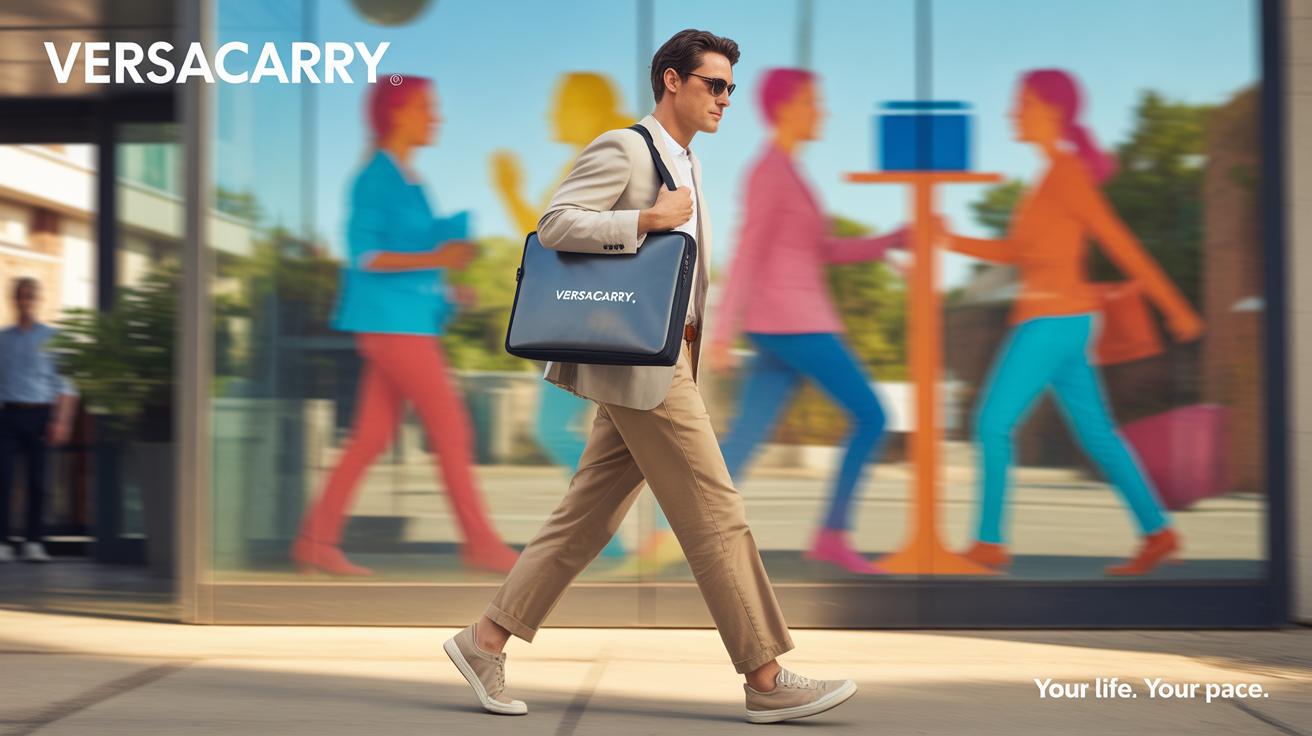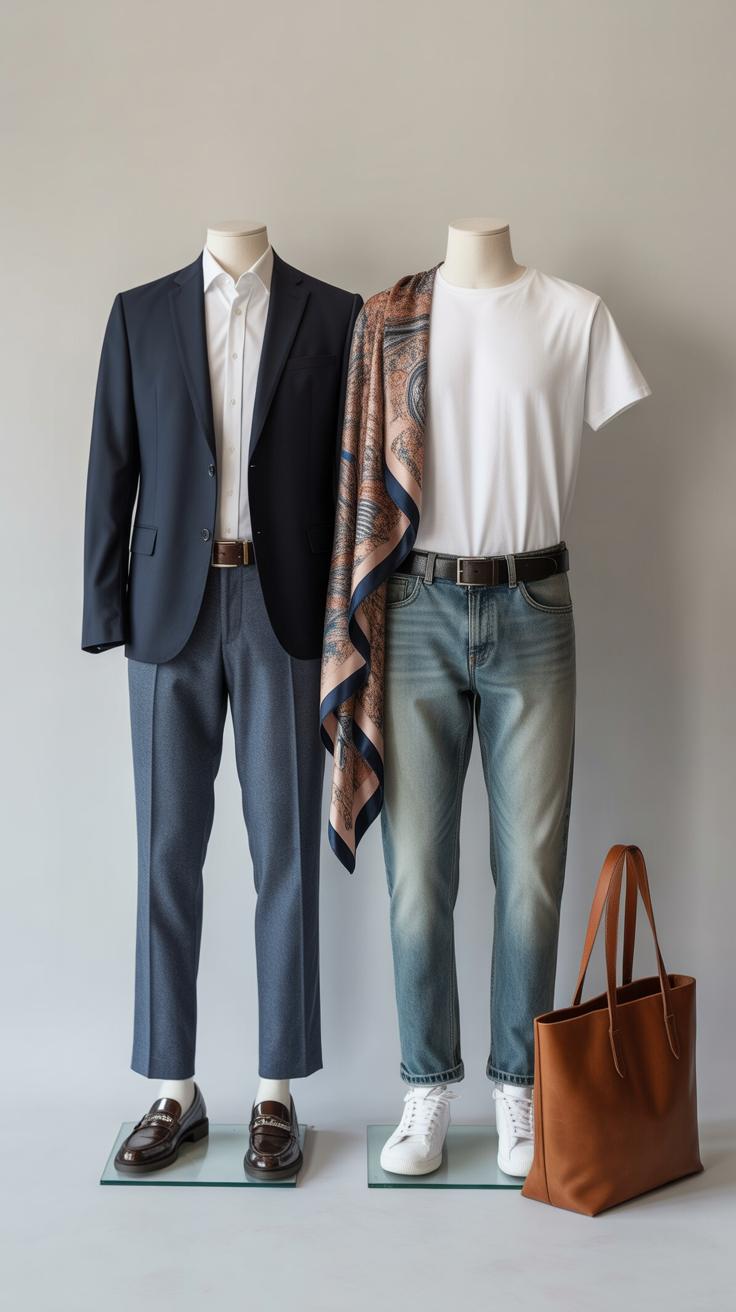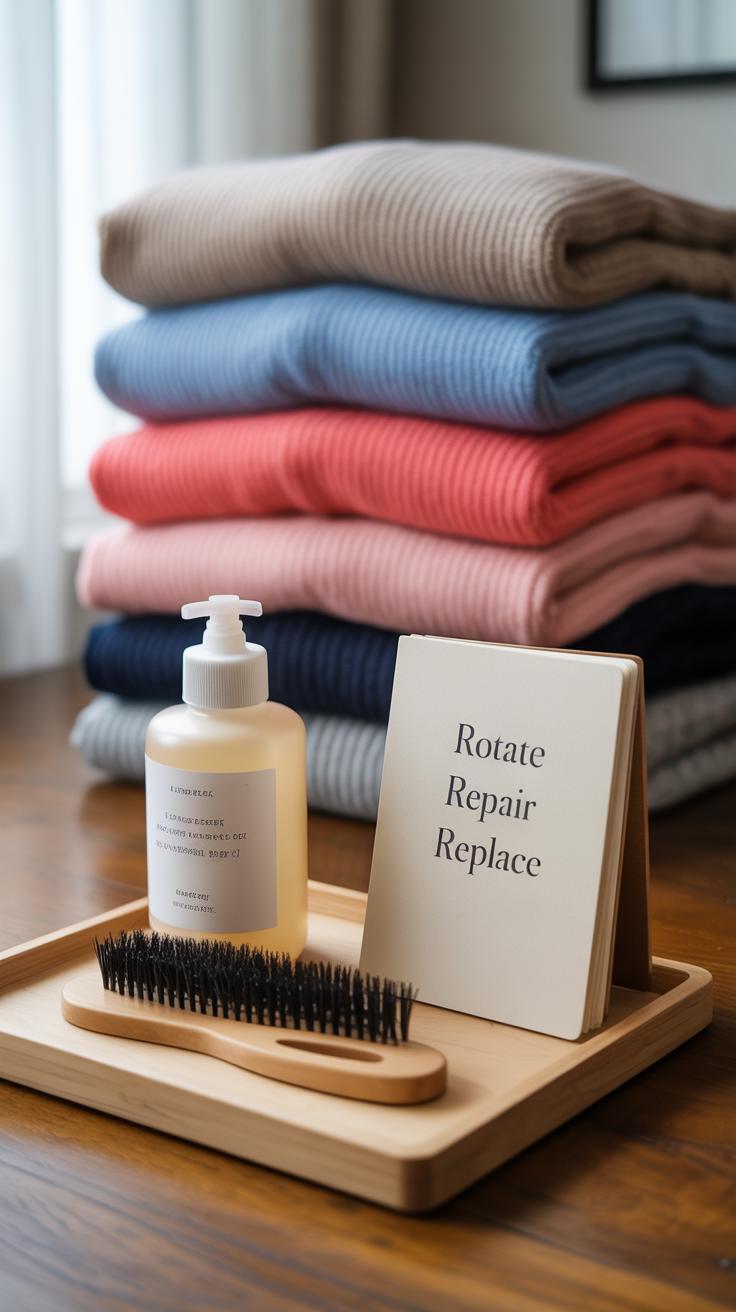Introduction
A capsule wardrobe is a small collection of essential clothes that you can mix and match to create many outfits. It helps you pack light and look stylish for any occasion. For 2025, the concept of the capsule wardrobe grows in popularity as more people seek simpler ways to manage their clothing. This article explores Capsule Wardrobe 2025 Trends For Smart Packing to help you stay prepared and fashionable with fewer items.
You will learn which key pieces to choose, how to coordinate your clothes, and packing tips to make the most of your wardrobe. Whether you travel often or want to declutter your closet, these trends can help you live with less stress and more style throughout the year.
Understanding The Capsule Wardrobe Concept
A capsule wardrobe is essentially a small collection of clothing items that all coordinate with each other. The goal is to own fewer pieces but more versatile ones. They fit well together, so you can mix and match without much fuss or worrying about what clashes. It’s about quality over quantity — carefully selecting what you really need rather than accumulating things that just sit in your closet.
The idea isn’t new. It dates back to the 1970s when Susie Faux, a boutique owner in London, introduced the “capsule” concept. Since then, it’s resurfaced periodically, adapting to different times but holding onto the same principle: simplify your wardrobe for smoother dressing and smarter packing. Imagine pulling out five to ten items and getting a surprising number of looks—that’s the magic behind it.
What struck me when first trying this approach is how oddly freeing it feels. You stop obsessing over “I’ve got nothing to wear” because the pieces are designed to work together. And yes, it can be a little limiting at first, but that’s part of the charm. It forces you to think about what you really want and actually use.
History And Purpose Of Capsule Wardrobes
The capsule wardrobe concept began gaining traction in the 1970s, largely as a reaction to overwhelming consumerism and fast fashion cluttering people’s closets. It was meant to cut through that noise and bring clarity back to how people dress—especially women juggling busy lives and tight schedules. The challenge was simple: pick a handful of well-made, timeless pieces that can take you from work to casual outings without needing a whole new outfit.
In the decades since, the capsule wardrobe has seen waves of popularity. During economic downturns or changing cultural attitudes towards sustainability, this pared-down approach shines because it offers a way to own less but feel more in control of your style. People realized, maybe clothing isn’t about endless variety but rather making a few versatile choices.
It’s also tied strongly to travel—packing light, avoiding bulky suitcases, and still having everything you need at your fingertips. The purpose remains simple: simplifying life, easing decision-making, and helping people find satisfaction with less fuss.
Benefits Of A Capsule Wardrobe
Choosing a capsule wardrobe offers several clear advantages. Here’s what you might expect:
- Saving Space: Fewer items mean less closet clutter and easier storage, especially useful if space is limited.
- Reducing Decision Fatigue: It’s simpler to put together outfits when the pieces are designed to coordinate; you spend less time staring at your closet in confusion.
- Saving Money: Though the initial investment in quality pieces may be higher, you avoid impulse buys and fast fashion that quickly wear out.
- Increasing Outfit Variety: Oddly enough, owning less can mean more looks because each piece is multipurpose and matches with multiple others.
What’s interesting is how this approach nudges you toward appreciating what you own. I found myself actually wearing clothes that had been shoved to the back before. And packing for trips became a breeze—no oversized bags weighed down by rarely worn items. Your mindset shifts subtly but noticeably.
Key Pieces To Include In Your 2025 Capsule Wardrobe
Staple Items For Versatility
When building your 2025 capsule wardrobe, certain pieces will form the backbone of your daily wear. Think of a well-cut blazer, a quality white shirt, a pair of tailored trousers, and dark jeans. These items might seem simple, but they adapt with surprising ease—from casual lunches to more formal meetings.
Don’t overlook a classic trench coat or a neutral cardigan. They’re easy to layer and move through seasons without feeling out of place. A minimalist dress and comfortable sneakers round out the list nicely, providing options you might not grab otherwise. I once kept a simple black turtleneck for years—it was a surprise lifesaver, pairing well with almost everything.
Choosing pieces like these ensures you can dress up or down without a total wardrobe overhaul.
Colors And Fabrics That Work Together
Sticking mostly to neutral shades—think soft beiges, muted grays, navy, and blacks—makes mixing and matching a bit less stressful. But don’t be afraid to add a subtle color or two. Olive or dusty rose, for example, can add personality without clashing.
Materials matter, too. Prioritize fabrics that feel good all day and travel well, like cotton blends, lightweight wool, and soft linens. These textures don’t only look tidy but also age gracefully. Sometimes, I pick a piece solely because it’s comfortable enough for a long day, which is probably more important than we admit.
When pieces are selected thoughtfully on both color and fabric, they’ll work together nearly effortlessly. The question is, how minimal can you go and still feel ready for anything? That’s the balancing act worth exploring.
Seasonal Adjustments And Updates
Changing seasons don’t mean you have to overhaul your whole capsule wardrobe. You can keep things lean by swapping just a few items here and there. Instead of adding bulky coats and heavy sweaters every winter, think about layering lighter pieces that can handle both chilly and mild days. Maybe a versatile trench coat or a sleek cardigan replaces a heavy parka in the fall, and then comes out again in spring for a little warmth without too much fuss.
Swapping pieces doesn’t mean bringing in a whole new set. Instead, consider these small shifts:
- Add a warm scarf or gloves only if you really need them for cold snaps, then store them away when the weather warms up.
- Switch out summer dresses for long-sleeved tops or lightweight knitwear as temperatures drop.
- Rotate footwear—like swapping sandals for ankle boots or loafers—without crowding your shoe rack.
Keeping a minimal wardrobe year round is about picking clothes that work across seasons. For example, a cotton shirt layered under a sweater, or a simple blazer that can go over a tee or a turtleneck. Pieces that can be dressed up or down don’t just save space; they give you way more outfit options than they might seem to at first glance.
What if you spend weeks in between seasons feeling like you either have too much or not enough? Maybe the key is not to focus on perfecting every single piece by season, but to accept a bit of overlap—and wear items in unexpected combinations. That’s where the magic of a capsule wardrobe lies: flexibility, not rigidity.
Smart Packing Tips With A Capsule Wardrobe
Choosing Pieces That Pack Well
When selecting items for your capsule wardrobe, picking clothes that travel well makes a huge difference. Lightweight fabrics like cotton blends, silk, or thin knits tend to fold or roll smoothly without creasing much. I find that wrinkle-resistant materials, such as polyester mixes or specially treated linens, save a ton of time because you avoid hunting for an iron on arrival.
Think about how certain clothes behave after being stuffed into a suitcase. Bulkier sweaters might feel cozy but take up space, while thinner layers often serve better as they layer without adding weight. Also, consider the drying time if you plan to wash items mid-trip — fast-drying fabrics make your choices more flexible.
Packing Strategies For Multiple Outfits
One way to get the most out of your capsule pieces is to build outfits around versatile staples. A blazer, for example, can dress up or down several looks, meaning you don’t have to bring multiple jackets. Rolling clothes instead of folding is helpful, though layering thinner items inside shoes or corners of the bag can save room.
Try organizing your list by categories—tops, bottoms, outerwear—and think through combinations before packing. Could that dress become a skirt with a tucked-in blouse? Will one pair of shoes fit every planned activity? Mixing and matching maximizes what you bring and often surprises you with new outfit ideas you hadn’t considered.
Have you noticed how sometimes carrying less actually feels more freeing? That’s the kind of packing smartness a capsule wardrobe subtly encourages.
Color Coordination And Outfit Planning
Picking a color palette for your capsule wardrobe can feel like a puzzle, but it’s really about keeping things straightforward. Choose a few base neutrals—think black, navy, gray, or beige—that work well together and can serve as the backbone of your outfits. These colors naturally mix and match, so you can wear any two or three pieces together without giving it much thought.
Once you have those essentials, think about adding one or two accent colors. A soft blue, earthy green, or muted red can bring life to your outfits. But here’s the trick: use them sparingly, like in a scarf or a top, so you don’t limit how much else you can wear. It’s easy to get carried away with color, but restraint keeps the wardrobe more flexible.
Planning outfits ahead might sound like extra work, but it really pays off. You can lay out your clothes the night before or dedicate some weekend time to create small outfit sets. That way, mornings aren’t frantic. Plus, when you’re packing or preparing for a week, those pre-planned combos help you see what’s missing or what’s redundant. I sometimes use photos of those outfits to jog my memory—it saves time and helps avoid those “I have nothing to wear” moments.
Maximizing Closet Space With Minimalism
A capsule wardrobe naturally shrinks your clothing collection, which immediately frees up closet space. With fewer pieces to store, you don’t have to cram items side by side, letting everything breathe a bit more. This clearer space makes it easier to see what you own—no more digging through piles or overcrowded hangers. The simplicity offers a kind of quiet order that’s both practical and, well, a little satisfying.
When it comes to arranging your capsule wardrobe, grouping similar items together helps a lot. For example:
- Hang tops by sleeve length or color order—whatever feels intuitive to you.
- Fold bottoms in neat stacks or use drawer dividers for pants and skirts.
- Keep versatile pieces front and center so you can grab them quickly.
Personally, I find rotating seasonal items out of sight—like using storage boxes or a second rack—makes the space feel less crowded. It’s surprising how minor changes make mornings less rushed.
Also, let’s talk about trimming excess. Holding on to “just in case” items often clutters your closet without real benefit. Try to be honest: if you haven’t worn something in months and it’s unlikely you will, it’s okay to let it go. This step can feel tricky at first—there’s some hesitation, naturally—but it ultimately streamlines your choices and keeps your wardrobe purposeful.
Have you noticed how much easier dressing feels when your closet isn’t overwhelming? Minimalism in your wardrobe isn’t just about style—it’s about making your daily routine simpler, maybe even a bit calmer.
Sustainable Fashion And Capsule Wardrobes
Owning fewer clothes often means paying more attention to each piece. You might find yourself picking items with better fabrics, stronger stitching, or classic designs that won’t feel outdated next season. It’s not just about spending more; it’s about making sure that what you wear lasts, rather than piling up a closet full of items that quickly wear out or lose appeal.
When you choose quality over quantity, you reduce the cycle of buying and discarding. Fast fashion may seem convenient, but it contributes to a huge amount of waste. Capsule wardrobes challenge that by encouraging thoughtful purchases, which actually means less overall impact on the planet.
Think about how this works for the environment. By owning a streamlined collection of clothes, you cut down on textile waste. Manufacturing fewer garments means fewer resources—like water, energy, and chemicals—are consumed. It’s not a perfect solution, though. Some fabrics, even high-quality ones, still carry significant environmental costs, and sometimes a minimalist wardrobe can lead to more frequent washing if items are worn more often.
Still, the small difference each of us makes adds up. Less clutter, more care, and a bit more patience in choosing what we wear might be one of the simplest ways to reduce fashion’s footprint. Could that be why so many are turning toward minimalist styles in 2025?
Adapting Capsule Wardrobes For Work And Casual Life
Building a capsule wardrobe that works for both professional and casual settings can feel tricky, but it’s really about choosing versatile pieces that cross those boundaries smoothly. For example, a tailored blazer isn’t just for the office—it can instantly elevate a simple tee and jeans for a relaxed evening out. You want items that look polished but don’t scream “formal” all the time.
Think about fabrics and cuts too. Soft knits, crisp shirts, and structured pants can all play double duty when mixed thoughtfully. Sometimes I find myself reaching for the same pair of loafers whether I’m heading to a meeting or grabbing coffee with friends. Comfort matters, but so does a bit of style adaptability.
Balancing Formal And Casual Pieces
When blending formal with casual, layering is your friend. Here are a few ways to do it:
- Pair a sharp blazer with relaxed denim or a casual skirt
- Wear dressy shoes with more laid-back outfits to add polish
- Swap a plain shirt for one with subtle texture or pattern for interest
- Use neutral colors to make mixing pieces feel natural
The trick is not to overthink it. Throwing on one dressier piece usually changes the whole vibe. Yet sometimes what’s casual to you might seem a bit off to others—there’s always a bit of guesswork.
Accessorizing To Change Looks
Accessories can make a simple outfit fit many occasions. A sleek watch or delicate necklace can bring sophistication, while a bold scarf or chunky bracelet feels more playful. Switching bags—say, from a structured tote to a crossbody—affects the overall mood too.
I’ve learned that investing in a few quality accessories is kind of like having secret weapons. Without buying more clothes, I tweak my look just by changing these small details. Yet, sometimes too many accessories clutter rather than clarify; less really can be more.
Could you imagine having just a handful of items, but feeling like you have endless options? That’s kind of the whole point. It’s about making every piece count, in every part of your life.
Maintaining Your Capsule Wardrobe Over Time
Clothing Care And Longevity
Extending the life of your capsule wardrobe pieces starts with how you care for them. Washing clothes gently is key—you might want to turn delicate items inside out and use cold water settings. This helps preserve color and fabric integrity. Sometimes, air drying feels like a hassle but it’s often kinder than tossing everything in the dryer. I’ve noticed my favorite wool sweater lasts way longer when I avoid machine drying altogether.
Storage matters too. Avoid overcrowding your closet to prevent wrinkles and fabric stress. Using padded hangers for delicate tops or folding knitwear neatly can make a difference. When something starts to show wear—a tiny tear or loose thread—address it early rather than waiting until the damage gets worse. Fixing small issues may be tedious, but it keeps your pieces wearable and saves money in the long run.
Evaluating And Refreshing Your Wardrobe
It’s tricky to say exactly when to re-evaluate your capsule wardrobe, but a yearly or seasonal review usually works. Ask yourself if each item still fits your lifestyle and feels comfortable. Your tastes might shift gradually, and that’s okay. Maybe that classic blazer doesn’t excite you anymore, or your daily routine demands more casual pieces now.
When reviewing, be honest but practical. Removing items you no longer wear frees space and mental clutter. Adding new pieces should be thoughtful—look for versatility and quality over quantity. Sometimes, a small change can refresh your whole wardrobe without losing its simplicity. Does that mean you ditch every item that feels “so last year”? Not necessarily. The goal is balance: keep what works, update what doesn’t.
Conclusions
By embracing the Capsule Wardrobe 2025 Trends For Smart Packing, you simplify your daily choices and reduce the need for excess clothing. Choosing versatile, timeless pieces that work well together lets you create many outfits with fewer items. This method saves time, money, and space whether at home or traveling.
Smart packing with a capsule wardrobe means you only carry what you truly need. This approach suits modern life by combining practicality with style. Try building your capsule wardrobe for 2025 and discover how it changes your habits and wardrobe for the better.


